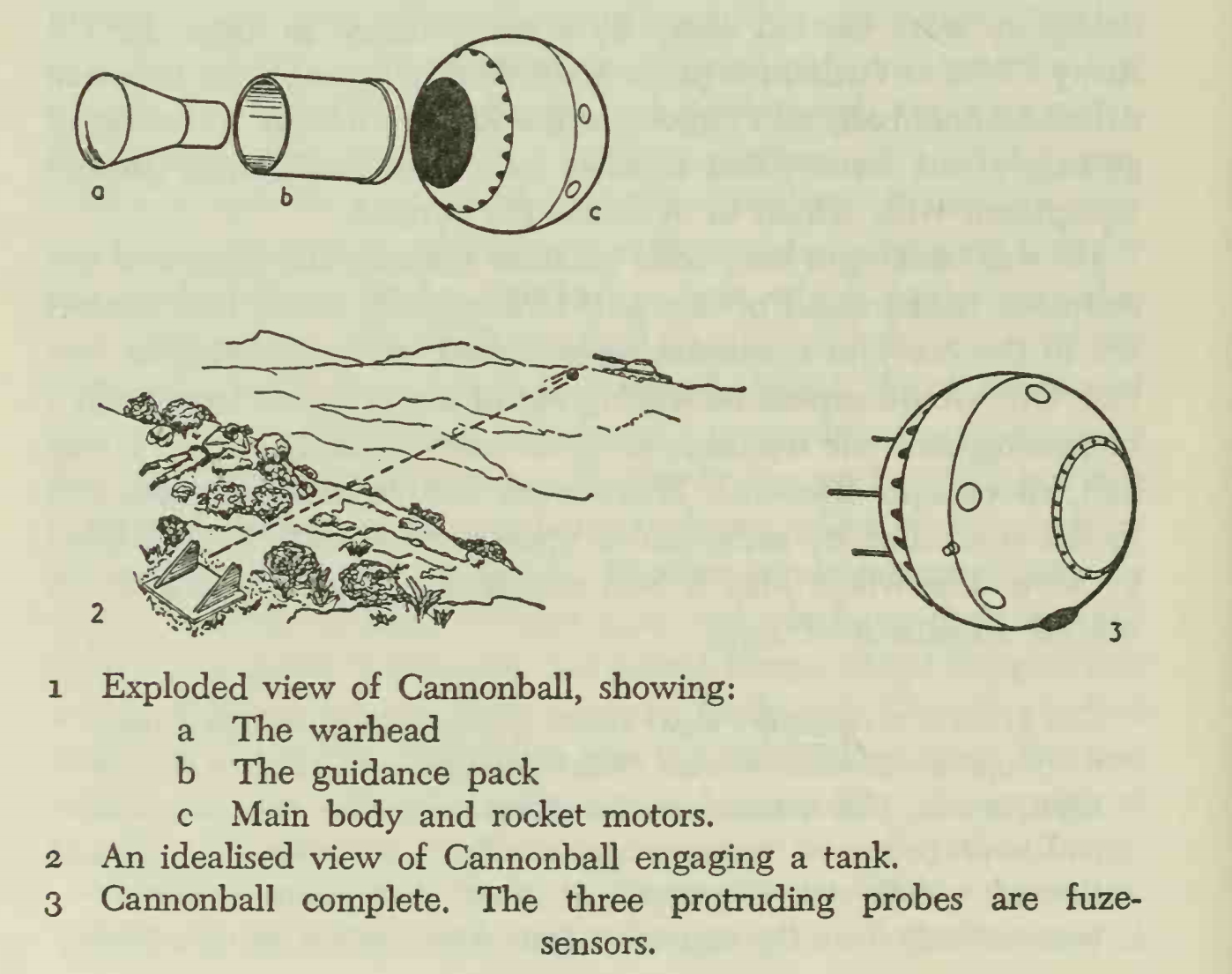
The unusual, if not the downright crackpot, appeared in the early days of the anti-tank missile age. This era stretched throughout the 1950s, with the level of wild optimism running fairly evenly all the way. It is perhaps worth noting that the first French missiles began to be generally available to the buying public in the late 1950s and from then on the rush of inventions took a more sober line as actual experience was gained with proper hardware. But with no real experience behind them, some designers were carried away by strange ideas. In 1952 the US Army Chief of Ordnance put a good deal of money into a device called Cannonball, also known as the D-40, with the intention of getting about twenty-five missiles and some associated ground equipment with which to evaluate the project.
He was backing a long-odds outsider because the D-40 had the strangest background of any anti-tank missile, for it had started life in the Navy as a submarine-launched, anti-ship weapon system. One would expect something out of the ordinary from such a beginning, and one would have been quite right. D-40 was a true ball, about 24inch diameter. There were two varieties, a 300lb test model controlled by radio and a 150lb tactical version controlled by wire. The whole idea is best summed up in the words of an official document of 1955.
The D-40 is a subsonic, short range guided rocket utilizing manually operated radio or wire command guidance along a line-of-sight course. The missile may be either ground or ship launched and is propelled to the target by a solid fuel rocket exhausting through a radial jet. The missile is spherical to eliminate aerodynamic effects from the control system. Stabilization in roll, pitch and yaw, is effected by properly placed jets exhausting tangentially in response to signals from three reference gyros operating in conjunction with relays and solenoids. Guidance is achieved by applying correcting signals to shift the contact locations on the gyros, thereby changing the average orientation of the main jet and the flight of the missile.
Which puts it all into one neat package.
To expand a little on the rather bald official description, I should mention that there was one main propulsive jet and three pairs of stabilising jets. In flight the ball did not roll and it remained in the air by virtue of the fact that the main jet pointed downwards at an angle of 45° so that half of the jet’s thrust supported the weight and half pushed it along. The stabilising jets maintained the delicate balancing act. It flew at 280mph to a range of 3,000yd over land, but only 1,000yd over water, taking, it should be noted, a rather leisurely 18.5 seconds to do the land journey and considerably less for the over-water flight. Guidance was by means of a joystick in the operator’s hand and he sighted the target through a powerful optical system. The real merit of Cannonball lay in its warhead which was either a 5olb shaped charge or a 65lb squash head. Either was more than enough to destroy any tank that it hit. The warhead and the guidance electronics were carried in a cylinder running right through the middle of the ball, rather like the core of an apple, with an impact fuze set in the outer shell. The rocket motors were carried in the outer part of the apple, surrounding the core, and the jets were in a circle round the equator. The launch platform was a simple two-armed bracket which held the ball horizontally until it shot itself off. The Navy was concerned to have some sort of autoloader for underwater firings.
At least fifty of these unusual missiles were fired between 1953 and 1956, all in conditions of great secrecy. They did what was expected of them and the whole programme looked most promising, but costs had risen three or four times above the original estimate, and the Army was having doubts about handling the beast in the field, so it was reluctantly dropped.